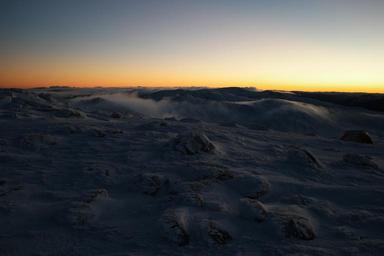Introduction
In a world inundated with noise, both visual and auditory, the power of simplicity and contemplation has never been more crucial. Photography, as an art form, allows us to freeze moments in time, capturing emotions, thoughts, and experiences that might otherwise slip away unnoticed. Among the myriad styles available to photographers today, contemplative photography emerges as a profound way to foster connection and introspection. This article will delve into Artistry in Simplicity: The Power of Contemplative Photos, exploring its nuances and illustrating how this approach can elevate aesthetic self-portrait photography and enhance our understanding of art.
What is Contemplative Photography?
Defining Contemplative Photography
Contemplative photography invites viewers to pause and reflect. It's not merely about capturing what meets the eye; it's about what lies beneath the surface—the emotions and thoughts stirred by a moment. This style encourages photographers to engage deeply with their environment and the narratives they wish to convey.
The Philosophical Roots of Contemplative Photography
Rooted in mindfulness practices, contemplative photography aligns closely with Eastern philosophies that emphasize presence and awareness. By training one's focus on the present moment, photographers can create images that resonate profoundly with viewers.
Key Elements of Contemplative Photography
Observation: Taking time to observe surroundings without rushing. Intention: Focusing on what one wishes to express through an image. Simplicity: Stripping away unnecessary distractions to highlight the subject.The Aesthetic Appeal of Contemplative Photos
Why Aesthetic Matters in Photography
Aesthetics play a pivotal role in any form of art, including photography. The appeal of an image can evoke emotions, convey messages, or simply please the eye. In contemplative photography, aesthetics are intertwined with emotional depth.
Characteristics of Aesthetic Photos
- Use of natural light Minimalism Balanced composition Soft color palettes
Creating Aesthetic Photos for Print
When creating aesthetic photos intended for print—like those cherished rare home interior pictures—consider factors such as color accuracy, resolution, and material quality for optimal presentation.
Self Expression Through Self Portrait Photography
Understanding Self Portrait Photography
Self portrait photography serves as a powerful tool for self-expression. It allows individuals to showcase their identities through visual storytelling.
Aesthetic Self Portrait Photography Techniques
Utilize natural light for softer shadows. Experiment with angles for unique perspectives. Incorporate props that resonate personally.The Role of Emotion in Self Portraits
Emotional expression is essential in self-portraits. Capturing genuine feelings helps convey authenticity and vulnerability in your work.
Faceless Self Portrait Ideas: An Exploration of Identity
What are Faceless Self Portraits?
Faceless self portraits focus on elements other than facial features—hands, silhouettes, or objects that represent personal stories or experiences.
Creative Approaches to Faceless Self Portraits
Use reflections or shadows creatively. Incorporate elements from nature. Experiment with clothing textures and colors.Artistry in Simplicity: The Impact on Abstract Self Portrait Photography
Exploring Abstract Self Portrait Photography
Abstract self portrait photography pushes boundaries by emphasizing colors, shapes, and forms over recognizable features.
Techniques for Creating Abstract Images
- Long exposure settings Creative editing techniques Emphasizing movement
The Intersection Between Art Photography and Contemplation
Art Photography Defined
Art photography transcends simple documentation; it seeks to express artistic vision through various themes and styles while inviting viewers into deeper contemplation.
How Contemplation Enriches Art Photography
By incorporating contemplative practices into art photography, creators can produce works that resonate more profoundly with audiences—encouraging them to reflect on their experiences.
The Role of Linocut vs Woodblock Printing among Contemporary Printmakers
Understanding Printmaking Techniques
Printmaking has evolved significantly over centuries; contemporary artists often choose between linocut and woodblock printing methods based on desired outcomes.
Why Do Many Contemporary Printmakers Prefer Linocut?
Linocut printing offers versatility since it’s easier to carve than woodblock printing—allowing for more intricate designs while being cost-effective regarding materials.
How Aesthetic Photos Wall Can Transform Your Space
1. Choosing Aesthetic Photos
Curating an aesthetic photo wall involves selecting images that harmonize visually while conveying a thematic story or emotional resonance.
2. Arranging Your Aesthetic Photo Wall
Here are https://postheaven.net/lithiliirt/finding-balance-in-design-elements-the-perfect-wall-art-arrangements some strategies:
- Create a gallery-style layout Mix frame sizes for interest Maintain consistent color tones
FAQs
Q1: What defines contemplative photography?
A1: Contemplative photography emphasizes mindfulness and intentional observation while capturing moments that provoke thought or emotion rather than merely documenting reality.
Q2: How can I create aesthetic self portraits?

Q3: What are faceless self portraits used for?
A3: Faceless self portraits explore identity beyond traditional representations; they often reflect personal narratives through symbolism rather than facial features alone.
Q4: Why do contemporary printmakers prefer linocut over woodblock printing?
A4: Linocut techniques allow greater flexibility in design due to easier carving processes compared to woodblock prints which may require more advanced skill sets.
Q5: How can I hang large canvas prints effectively?
A5: Start by measuring wall space accurately; use appropriate hardware such as D-rings or sawtooth hangers based on weight—and ensure even spacing between multiple canvases when creating galleries!
Q6: What makes an image aesthetically pleasing?
A6: An aesthetically pleasing image typically incorporates balanced composition principles (like rule-of-thirds), harmonious color palettes—and evokes emotional responses or intellectual curiosity!
Conclusion
In conclusion, "Artistry in Simplicity: The Power of Contemplative Photos" showcases how this approach not only enriches personal expression but also invites viewers into a realm where reflection reigns supreme—a place where every click captures something timeless yet transient at once! Whether you’re exploring abstract self portrait photography or curating an aesthetic photo wall filled with meaningful images—you hold immense power behind the lens! Embrace simplicity; let contemplation guide you toward deeper connections within yourself—and foster those same connections with others through your artistry!